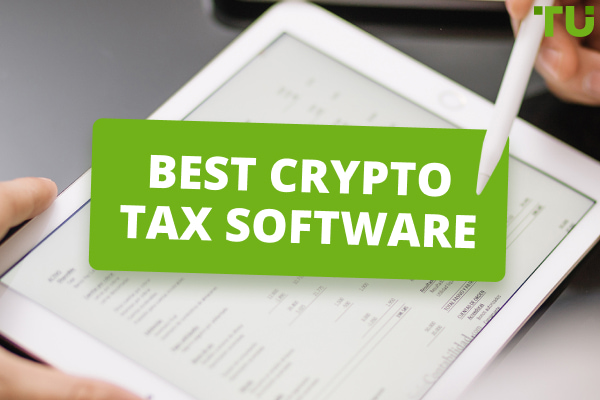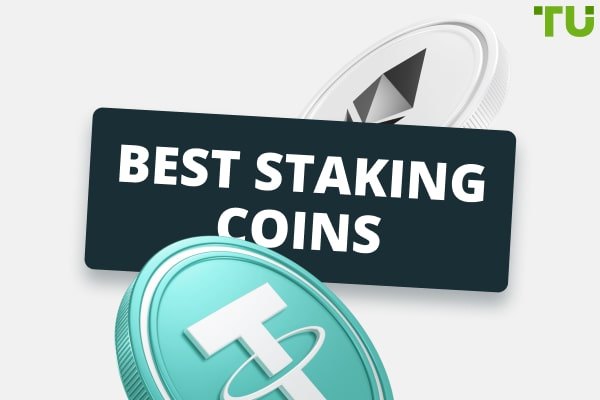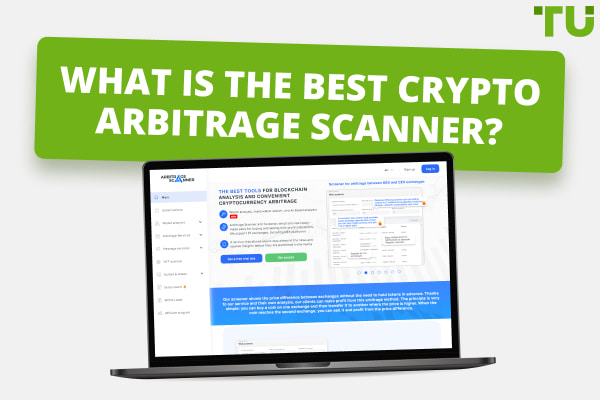Crypto P2P exchanges
Trading crypto P2P (peer-to-peer) allows the buyer and seller to interact with each other directly instead of in the presence of a third party or an intermediary. A decentralized transaction method allows buyers and sellers flexibility in conducting trades.
Continue reading to learn about what is P2P on crypto, and the advantages of trading P2P on cryptocurrency. Additionally, It will also help you learn how to conduct trades and maximize the value you can gain from P2P and what are the best P2P crypto exchanges.
Start trading crypto now with ByBit!What is P2P on crypto?
P2P trading is a way to exchange cryptocurrency that lets users do business directly with each other without going through an intermediary.
P2P trading sites often have considerably more flexibility than conventional crypto exchanges, which generally have rigid rules and demand users go through an authentication process before they can access and utilize the platform.
When you do peer-to-peer trading, you can choose the offer you want and do business directly with the other person instead of using an automated engine. This gives you more options for selecting the most affordable rate and payment option for your needs. Also, direct contact with a trader allows you to better protect your privacy.
But because there is no middleman, it is much easier for people to sign up without verifying their IDs. Since this could hurt the security of the crypto exchange, most decentralized exchanges have a lot of safety measures in place. Most peer-to-peer exchanges have a feedback or rating system to protect all parties and add an extra layer of security. You'll be able to check their reputation and ratings before doing business with them.
P2P cryptocurrency exchanges also let you explore a variety of traders to see what they have to offer. You can choose from several ways to pay that have varying costs and still keep control of your money.
Pros:
Feasible payment options
P2P platforms provide traders with various payment methods based on their convenience. However, the availability of the payment methods depends on the seller. Payments could be in the form of gift cards, digital payment systems like PayPal, credit cards, digital currencies like Bitcoin or Ethereum, or checks.
Low trading fees
There is a fee for every trade on peer-to-peer (P2P) cryptocurrency exchanges, but it is much less than on centralized cryptocurrency exchanges. Additionally, since these platforms don't use intermediaries, they charge escrow fees.
Flexible trade orders
Through crypto P2P trading platforms, you can set your own trade orders, giving you more control. You can decide how much money you wish to exchange and the price you want to purchase or sell. You can't use this kind of flexibility on centralized exchanges, where the exchange itself controls the order book.
Security
P2P networks provide escrow services, holding payments until agreements are finalized between traders. To start secure transactions, the security function employs two-factor authentication and encryption.
Access to the global market
Through P2P crypto trading, you can access multiple buyers and sellers worldwide. If you are in a country where cryptocurrency trading is banned, you can still trade on P2P platforms as they are not regulated by central authorities.
Cons:
Low liquidity
Compared to centralized exchanges, P2P crypto trading platforms often have less liquidity. This implies that your trade order might not always be matched by someone who is actively trading. As a result, you might have to search for a buyer or seller for longer, which could affect the cost of the currency you're trying to purchase or sell.
Slow speed
Using P2P cryptocurrency trading platforms has some dangers, just like other trading platforms. The trading speed is slow because there are chances that one party might stop the transactions midway or the buyer and seller might not be able to agree on terms. Trying to buy or sell cryptocurrencies might cause delays and inconveniences. If the price of the currency changes during the transaction, it could also have an effect.
An interface that is hard to use
Since there isn't a middleman for regulation, it can be hard to figure out how to use the P2P platform. Moreover, a learning curve is involved throughout the onboarding process.
Main types of P2P crypto exchanges
There are three leading P2P crypto exchanges:
Decentralized exchange
Here, there is no centralized oversight and no intermediary overseeing the trades. DEXs (decentralized exchanges) use smart contracts and decentralized applications to make trades happen based on well-known metrics. The Ethereum blockchain now powers the majority of DEXs.
Your private information is secure because there is no known know-your-customer (KYC) requirement. DEXs are also safer if security checks are considered when smart contracts are written. But the interface might not be as good as CEXs (centralized exchanges), which could affect the number of trades and how fast they happen.
Centralized exchange
A centralized exchange is the most common type of Bitcoin exchange. These are usually easy to use. They are generally governed by a central body, usually the exchange's owner.
Every order in CEX is recorded and checked by the company to ensure it is secure and correct. Most of the time, you can trade one cryptocurrency for another and use money from your bank account or credit card on these exchanges.
One of the key features that the majority of CEXs provide is customer support. For individuals just starting out in cryptocurrency trading, this is quite advantageous.
However, your money will continue to be in a wallet that the CEX controls. A "know-your-customer" (KYC) procedure that asks for some personal information may also be part of the process of signing up.
Hybrid exchange
The advantages of centralized and decentralized exchanges are combined in hybrid exchanges. Users in DEX have total control of their money. For instance, they can decide whether to trade using smart contracts or to keep a wallet.
A hybrid crypto exchange tries to solve the problems with decentralized exchanges by letting clients see their private keys. Addressing the DEX's exorbitant trading fees was another one of the HEXs' main objectives.
Best Crypto ExchangesHow does a peer-to-peer cryptocurrency exchange work?
You must provide an email address and password to sign up for a P2P crypto exchange. There are no requirements for ID verification. Each cryptocurrency has multiple buyers and sellers with different rates, payment methods, and purchase amounts.
Once you make an offer, the transaction process begins. In some cases, the buyer and seller both have to give some collateral toward an escrow contract, which will be released if the transaction is successful.
In the event of a conflict, the affected party will be compensated. In other cases, the seller has to give collateral, which they receive back once the buyer approves the transaction.
How to exchange crypto using P2P
Below is a step-by-step guide for beginners on how to exchange crypto via P2P with Binance:
-
Make your account on the Binance application by providing your email and a chosen password.
-
Once you log in, you can complete your identification by clicking on the user icon. Set up your payment methods by clicking on its tab. You will have to go through an SMS authentication process.
-
Click on "P2P Trading" on the home page.
-
Click on the "Buy" tab and look for an offer that meets your demands.
-
Enter the quantity, confirm your payment method, and click on "Buy (Crypto)."
-
Click on "Transfer the Fund" to send money to the seller as per the agreed-upon payment conditions.
-
Then, click on “Transferred, next.”
-
You will see the status “Releasing”.
-
Once the seller releases the crypto, the transaction is complete. You can transfer the funds to your wallet by clicking on “Transfer to Spot Wallet”.
What is the best P2P crypto exchange?
Binance P2P - Best of all
There's no doubt that Binance stays at the top of the list regarding P2P crypto exchanges. It is popular in terms of reliability, but it's also known for its wide range of supported coins. It supports over 60 cryptocurrencies on the decentralized platform, including Bitcoin, Ethereum, BNB, and more.
In addition, the taker fees on Binance P2P are 0%, while the maker fees are only 0.35%. This is why people prefer this P2P crypto exchange above others. What sets it apart from other decentralized exchanges is that the platform requires a certain verification level.
Since P2P trades can be pretty slow, Binance does its part to expedite the process by accepting an additional 0.5% fee for an instant transaction.
👍 Pros
• Low non-instant and instant buy fees
•Lots of extra services
•Wide range of supported coins
👎 Cons
•Not available in the US
FAQ
Is ID verification required to use P2P?
P2P exchanges do not check your ID, but you will need to give your email address and a password when you sign up for an account on the P2P cryptocurrency exchange platform.
What are the risks associated with P2P?
While trading on crypto P2P, there is a risk of low liquidity, which means that the trader might withdraw during the transaction because of the time-consuming process.
What is the difference between OTC and P2P?
In OTC, the transactions are regulated by a third party, so the speed is faster than in P2P. OTC has counterparty risk, whereas P2P has low liquidity risk.
Does P2P provide anonymity?
P2P provides less anonymity to its users. This is because buyers and sellers are directly in contact with each other. Second, your trading history is shown on the built-in reputation system of the platform so that other traders can give you feedback.
Methodology for compiling our ratings of crypto exchanges
Traders Union applies a rigorous methodology to evaluate crypto exchanges using over 100 quantitative and qualitative criteria. Multiple parameters are given individual scores that feed into an overall rating.
Key aspects of the assessment include:
User reviews. Client reviews and feedback are analyzed to determine customer satisfaction levels. Reviews are fact-checked and verified.
Trading instruments. Exchanges are evaluated on the range of assets offered, as well as the breadth and depth of available markets.
Fees and commissions. All trading fees and commissions are analyzed comprehensively to determine overall costs for clients.
Trading platforms. Exchanges are assessed based on the variety, quality, and features of platforms offered to clients.
Extra services. Unique value propositions and useful features that provide traders with more options for yield generation.
Other factors like brand popularity, client support, and educational resources are also evaluated.
Glossary for novice traders
-
1
Trading
Trading involves the act of buying and selling financial assets like stocks, currencies, or commodities with the intention of profiting from market price fluctuations. Traders employ various strategies, analysis techniques, and risk management practices to make informed decisions and optimize their chances of success in the financial markets.
-
2
Broker
A broker is a legal entity or individual that performs as an intermediary when making trades in the financial markets. Private investors cannot trade without a broker, since only brokers can execute trades on the exchanges.
-
3
Cryptocurrency
Cryptocurrency is a type of digital or virtual currency that relies on cryptography for security. Unlike traditional currencies issued by governments (fiat currencies), cryptocurrencies operate on decentralized networks, typically based on blockchain technology.
-
4
Ethereum
Ethereum is a decentralized blockchain platform and cryptocurrency that was proposed by Vitalik Buterin in late 2013 and development began in early 2014. It was designed as a versatile platform for creating decentralized applications (DApps) and smart contracts.
-
5
Bitcoin
Bitcoin is a decentralized digital cryptocurrency that was created in 2009 by an anonymous individual or group using the pseudonym Satoshi Nakamoto. It operates on a technology called blockchain, which is a distributed ledger that records all transactions across a network of computers.
Team that worked on the article
Alamin Morshed is a contributor at Traders Union. He specializes in writing articles for businesses who want to improve their Google search rankings to compete with their competition.
Olga Shendetskaya has been a part of the Traders Union team as an author, editor and proofreader since 2017. Since 2020, Shendetskaya has been the assistant chief editor of the website of Traders Union, an international association of traders. She has over 10 years of experience of working with economic and financial texts. In the period of 2017-2020, Olga has worked as a journalist and editor of laftNews news agency, economic and financial news sections. At the moment, Olga is a part of the team of top industry experts involved in creation of educational articles in finance and investment, overseeing their writing and publication on the Traders Union website.









